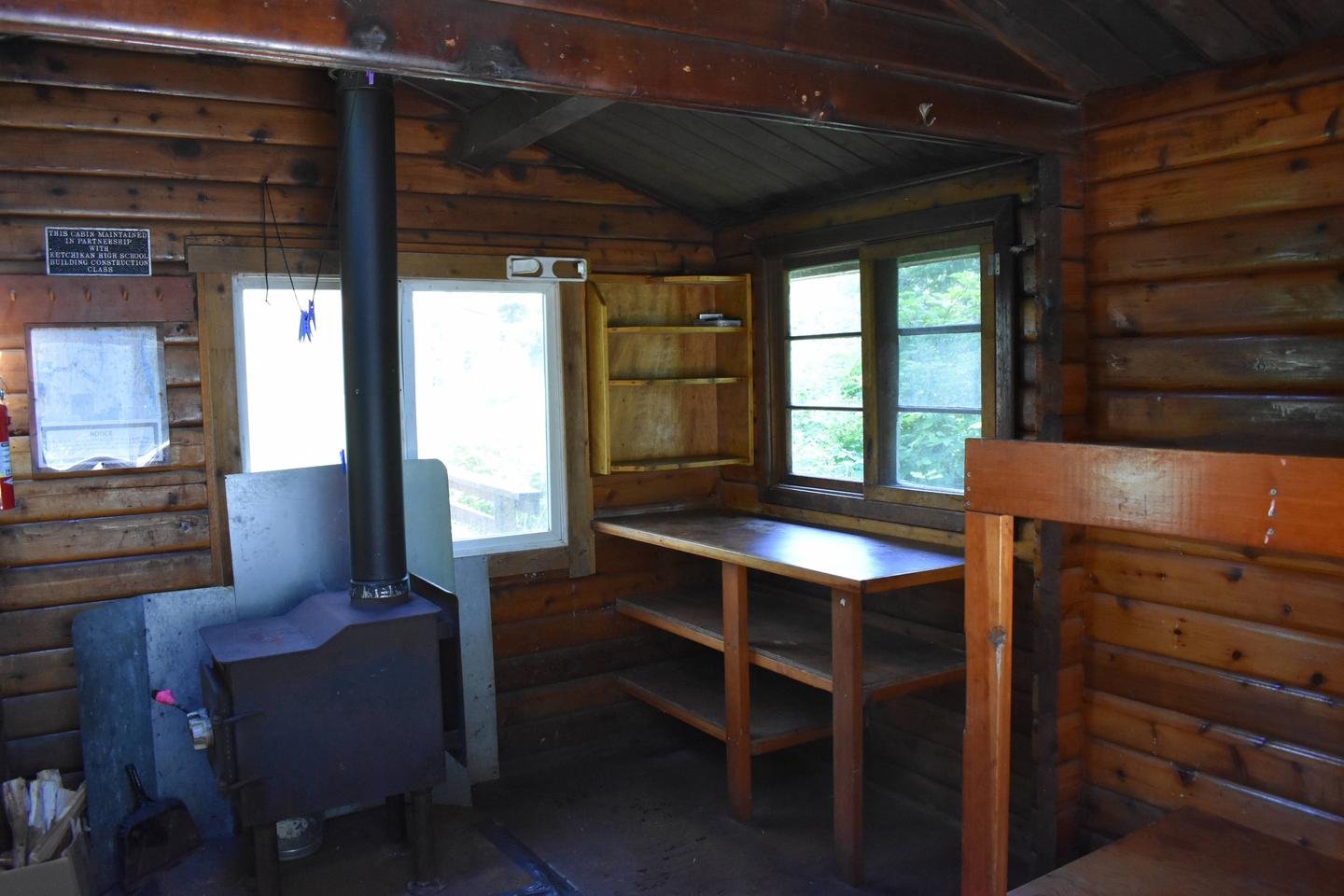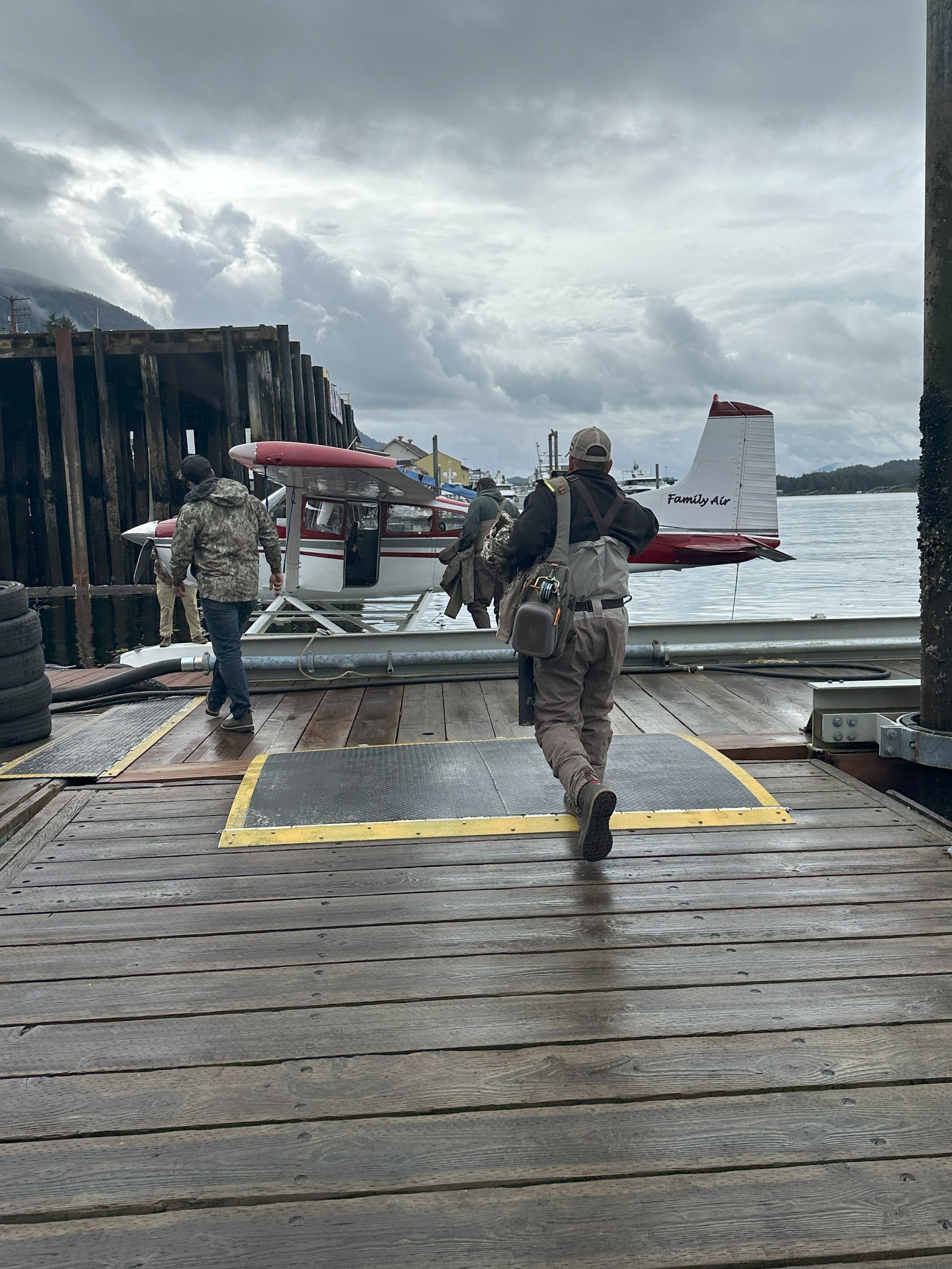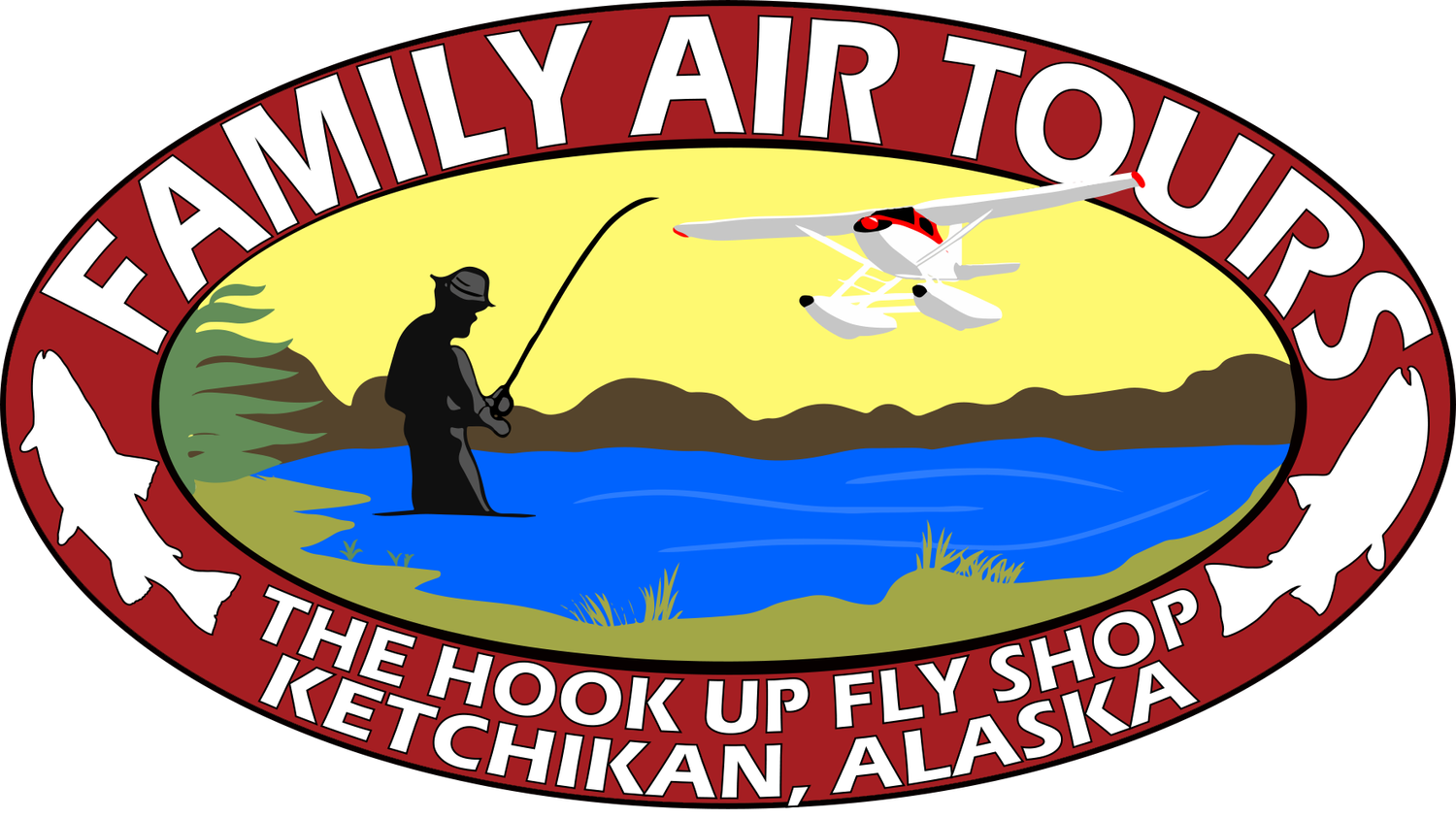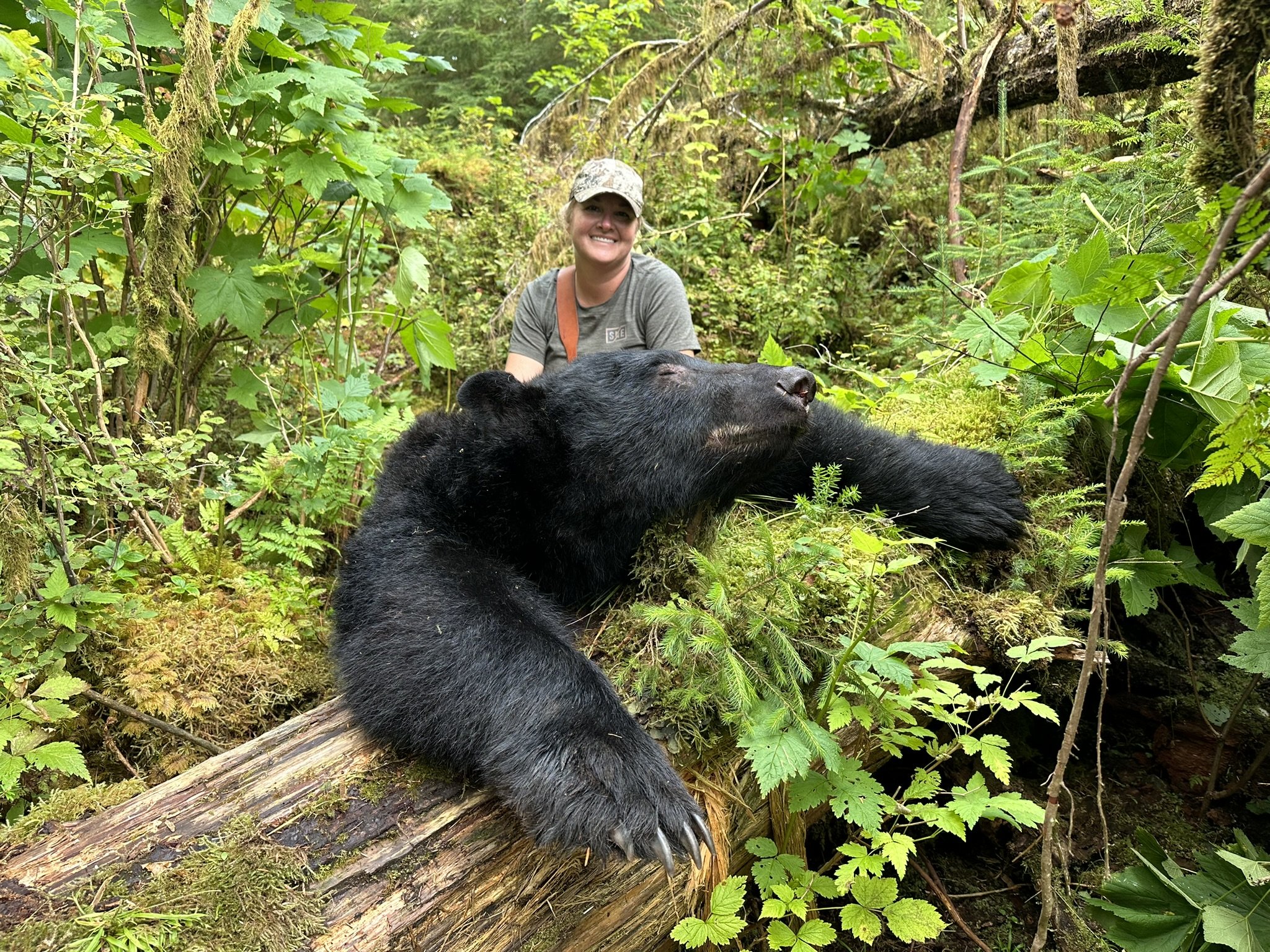
Self-Guided Hunting
Alaska offers a rich and diverse hunting experience with a variety of big game and small game opportunities. Hunters should be well-informed about AK hunting permits and understand Alaska hunting laws to ensure compliance. The Alaska caribou season provides thrilling adventures for those pursuing this prized species during the established Alaska caribou hunting season.
For deer enthusiasts, Alaska deer hunts feature the magnificent blacktail deer, answering the question, "Are there deer in Alaska?" A blacktail deer in Alaska is an exceptional quarry for hunters. The Alaska draw system, including AK draw hunts, Alaska draw tags, and Alaska draw results 2024, provides structured opportunities for hunting coveted big game. Hunters should be aware of Alaska drawing permits, Alaska big game draw, and the Alaska draw hunt deadline to plan their trips effectively.
Waterfowl hunters must adhere to Alaska duck hunting regulations and Alaska waterfowl regulations during designated seasons. Understanding Alaska hunting regulations, the varied Alaska hunting seasons, and detailed hunting regs Alaska ensures legal and successful expeditions. From the Alaska deer season to the Alaska grouse season, and the anticipated Alaska moose season 2024, planning is key.
All-inclusive Alaska hunting and fishing trips offer seamless experiences, with expert Alaska moose outfitters providing guidance for a memorable Alaska moose hunt. Knowledge of Alaska moose season and Alaska moose hunting laws is crucial, with additional considerations for non-resident hunters, such as Alaska non-resident hunting license and Alaska non-resident moose tags.
The regulations for Alaska small game hunting, including the ptarmigan season Alaska and Alaska small game regulations, are equally important. Bear hunting season Alaska draws adventurers looking to track down game during the appropriate bear season in Alaska. Moose hunting is a highlight, with various options from cheap moose hunting trips to guided Alaska moose hunts. Factors like the guided moose hunt price, Yukon moose hunt cost, and non-resident considerations, such as moose hunt Alaska non-resident cost, shape these experiences.
Lastly, for those venturing to Fairbanks, hunting in Fairbanks Alaska provides unique encounters. Fishing enthusiasts will also enjoy Ketchikan fly fishing, a must-try adventure. Non-residents should be aware of Alaska out-of-state hunting license requirements, and hunters should always observe hunting rules in Alaska and ensure they hold proper tags, such as the Alaska moose tag.
Self-Guided Hunts
Family Air Tours offers premier self-guided hunting trips for hunters seeking the adventure of a lifetime in Southeast Alaska. We provide air transportation to some of the most remote and untouched hunting locations in the region. With over 23 years of experience flying through Alaska’s rugged wilderness, we ensure you’ll reach prime hunting areas that are rich in wildlife and scenic beauty. Our team offers logistical support, expert advice, and local knowledge to make your self-sufficient hunting trip seamless and successful. For hunters looking to challenge themselves in the wild, Family Air Tours is your trusted partner in exploring Alaska's pristine hunting grounds.
Sitka Black-Tail Deer
A remote fly-out Sitka black-tailed deer hunt in Alaska is an exhilarating adventure into some of the most pristine wilderness on earth. The hunt begins floatplane flight from Ketchikan, transporting hunters to isolated regions, such as coastal islands or rugged inland terrain. These areas are far from roads and civilization, ensuring low hunting pressure and abundant deer populations.
Location and Terrain
The terrain varies from dense rainforests to alpine meadows and steep mountains. In early fall, deer are found in alpine areas, descending to lower elevations as snow accumulates. Hunters typically set up a remote camp and use spot-and-stalk techniques, glassing for deer on open slopes or along beachlines.
Challenges and Wildlife
The weather is unpredictable, often bringing rain, fog, and wind. The terrain is demanding, with thick brush and steep slopes. In some regions, hunters must also be cautious of black bears. The scenic backdrop includes breathtaking mountains, old-growth forests, and diverse wildlife such as eagles, whales, and bears.
Game Management Units (GMU):
We operate in GMU 1(Ketchikan Area) and GMU 2(Prince of Wales)
The Majority of these units run from August 1st to December 31st
Please make yourself familiar with all the specific regulations prior to booking you hunt, they can be found here
Hunting AK is an unforgettable adventure, with Alaska hunting offering incredible opportunities to experience the wild frontier. For the best experience, consider an Alaska hunting guide who can provide expert knowledge and ensure a safe, successful hunt. Customized Alaska hunting packages and thrilling hunting excursions in Alaska cater to all levels of hunters, making every Alaska hunting trip extraordinary.
The state is known for premier Alaska big game hunting, and Alaska hunting outfitters offer services that maximize your chances of a rewarding hunt. Join Alaska hunting tours to explore the vast wilderness, and even find Alaska hunting trips cheap for budget-friendly options. There are also affordable Alaska hunting trips that don’t sacrifice quality.
For those in urban areas, hunting in Anchorage, Alaska, provides accessible yet wild experiences. Guided hunting trips in Alaska ensure a well-organized and successful adventure for both novice and seasoned hunters.
Black Bear
A remote fly-out black bear hunt in Southeast Alaska is a thrilling wilderness adventure, combining the excitement of hunting with the challenge of a remote, untamed landscape. The journey begins with a floatplane flight from a Ketchikan, to a remote location accessible only by air. The flight offers stunning views of coastal rainforests, rugged mountains, and pristine rivers.
Location and Terrain
The terrain typically includes coastal areas, dense rainforests, and river valleys. Hunters target black bears emerging from hibernation in spring, or feeding on berries and salmon in the fall. These areas are far from civilization, providing an unpressured hunting environment where bears thrive.
The Hunt
Once dropped off, hunters set up a self-sufficient camp in the wilderness. The hunt involves spot-and-stalk techniques, often using binoculars to glass hillsides or tidal flats, then stalking closer. In coastal regions, boats or kayaks might be used to access hunting areas.
Challenges
Weather is unpredictable, with frequent rain and fog. The terrain is tough, requiring physical endurance. Safety is a priority, especially with the presence of both black bears and wolves in the region.
The hunt offers a deep connection with nature, stunning views, and the excitement of pursuing black bears in one of the wildest regions in North America.
If interested in a guided black bear hunt contact our friends at Dalin Charters
Game Management Units (GMU):
We operate in GMU 1(Ketchikan Area) and GMU 2(Prince of Wales)
The Majority of these units run from Sept 1-June 30
Please make yourself familiar with all the specific regulations prior to booking you hunt, they can be found here
Mountain Goat
A remote fly-out mountain goat hunt in the Ketchikan area of Southeast Alaska is a physically demanding and rewarding experience. The hunt takes place in rugged, mountainous terrain, where goats live in steep, high-altitude cliffs and rocky outcrops. The adventure begins with a floatplane flight from Ketchikan, landing in remote wilderness areas near the base of the mountain ranges.
Location and Terrain
The terrain is steep and challenging, often requiring hunters to climb through dense forests and scramble up rocky slopes to reach the alpine regions where mountain goats are found. Goats typically graze on high cliffs, and the hunt involves glassing these areas from a distance before planning a stalk.
The Hunt
Most Hunters set up a spike camp up on the mountain, and a base camp down at the lake, and then spend days hiking and glassing for goats. The spot-and-stalk method is most common, with hunters navigating dangerous terrain to get into shooting range. The physical demands of climbing and hiking in such rugged country make this hunt challenging, requiring stamina and mental toughness.
Challenges
Weather is unpredictable, with frequent rain, wind, and cold temperatures. The steep, slippery terrain adds to the difficulty, and hunters must be cautious while navigating cliffs and rocky outcrops. This hunt offers both the thrill of pursuing mountain goats and the challenge of navigating Alaska’s wild and untamed landscapes.
For guided goat hunts contact our friends at Dalin Charters
*Only Alaska residents may hunt Mountain goats without a guide*
Game Management Units (GMU):
We operate in GMU 1(Ketchikan Area) and GMU 2(Prince of Wales)
The Majority of these units run from Aug 1-Dec 31 or until there is too much snow!
Please make yourself familiar with all the specific regulations prior to booking you hunt, they can be found here
To explore the Google Map of all the Hunting lakes that Family Air flies to, follow these simple steps:
Access the Map:
Use the Google Map provided by Family Air. This map displays various hunting drop off locations that are accessible by our seaplane services.
Browse Hunting Locations:
Each lake is marked by a pin or icon on the map. Zoom in and out to explore different regions or areas within the Tongass National Forest or other remote parts of Southeast Alaska.
You can use your mouse or the + and - buttons in the corner of the map to zoom. To move around, simply click and drag the map in the direction you want to explore.
Click on Pins for More Information:
Clicking on a pin will bring up a small information window with details to book that flight.
Get Directions (Optional):
Although you won’t drive to these lakes, you can still use the “Directions” feature to get an idea of the distance from Ketchikan to the seaplane drop-off point. Select the lake, then choose Ketchikan or your current location as the starting point for an estimate of flight distance.
Planning Your Trip:
Use the map to identify which lakes are closest to prime hunting grounds.
Contact Family Air/Book Direct:
Once you've selected a lake, note its name and location. Contact Family Air directly to confirm their ability to fly to that location and schedule your seaplane transport. You can also book the lake directly further down on this page or through the pin link.
You can book directly further down the page or by using the link from the pins

How To Book
To book a flight using Acuity Scheduling, follow these simple steps:
Choose a Date and Time:
After selecting the destination, a calendar will appear. Pick the date and time that works for you.
Enter Your Details:
Provide your personal information (name, email, Weight, and phone number) as requested.
Confirm the Booking:
Review your selection, and then click on the "Confirm" or "Schedule" button.
Payment (if required):
A 50% deposit is required, you’ll be directed to a payment page. Complete the payment process.
Receive Confirmation:
You will receive a confirmation email with details of your booking, including the trip time, pick up location location, and additional instructions.

Important Information
Weather
The region is known for wet, unpredictable weather. Hunters should be prepared for rain, snow in late season, and cold temperatures.
Bring weather-resistant gear and clothing, and plan for challenging conditions.
Bring plenty of extra food in the event you are stuck due to weather conditions, we recommend three days worth.
Plan at least two more days on your hunt in the event of weather delays, Alaska Airlines understands the challenge of bush flying and will accommodate you if there is a weather delay and you miss your flight.
Terrain
This area is known for rugged, dense forests, steep mountains, and coastal areas that require physical fitness and preparedness for tough hiking conditions.
Trekking poles are highly recommended
We also recommend basic instep crampons to give you better footing on the moss in the alpine.
Be ready for remote, off-trail navigation in areas without cell service, a Garmin in-reach or similar satellite messenger is necessary equipment when hunting in remote Alaska. We have older Garmin models available at the shop for rent but highly recommend the Inreach Mini 2.
Logistics and Access
Typical Flight load for the Cessna is 2-3 People and Gear, total of 950 pounds.
Large hard cases do not fit well in the aircraft, please use water proof duffels or soft bags.
All firearms must be unloaded for transportation in the aircraft
We cannot fit hard gun cases in the aircraft but can store them for you while you are out hunting. We recommend bringing rifle socks or soft cases to use for your drop off.
We have bear spray available to loan so you do not have to purchase any while in Ketchikan
You can purchase stove fuel at Tongass Trading Company here in town
Meat Care and Preservation
Proper meat care is crucial in Southeast Alaska’s wet climate.
Citric Acid is great for preserving meat post processing
Be sure to store meat high in trees and AWAY from your campsite while waiting for pickup, the bears are smarter than you think.
We prefer you de-bone your game prior to the flight as it makes it easier to pack and cuts weight
Bring tarps, game bags, unscented garbage bags for transporting meat in the aircraft.
Most hotels in Ketchikan have freezers for storing your game meat when you get back to Ketchikan, we recommend bringing it home in a fish box that can be purchased at any of the local outfitters
A remote fly-out hunt in Southeast Alaska requires careful preparation due to the challenging environment, unpredictable weather, and remote location. Here’s a comprehensive packing list to ensure you’re well-prepared:
1. Essential Documentation
Hunting License: Ensure you have a valid Alaska hunting license.
Tags & Permits: Carry the necessary tags for the species you’re hunting (e.g., bear, elk, deer, etc.).
ID and Emergency Contacts: Bring identification and keep emergency contact information handy.
Maps/Permits for Land Use: Topographic maps of the area and permits for access if required.
2. Clothing (Layering System)
Due to variable weather in Southeast Alaska, layering is crucial:
Base Layer (Moisture-wicking):
Lightweight, long-sleeve shirt and pants (synthetic or merino wool)
Thermal underwear (merino wool or synthetic)
Insulating Layer:
Fleece or down jacket (lightweight but warm)
Insulated pants
Outer Layer (Weatherproof):
Waterproof, windproof jacket and pants (GORE-TEX or similar)
Waterproof hunting bibs
Socks:
Multiple pairs of wool socks (merino wool recommended)
Liner socks (to prevent blisters)
Gloves:
Insulated, waterproof gloves for cold weather
Lightweight gloves for hiking and shooting
Hat:
Wool or fleece beanie
Wide-brim hat or cap for sun/rain protection
Gaiters: Waterproof gaiters to keep water out of boots.
3. Footwear
Hiking Boots: Waterproof, insulated boots with good ankle support (break them in beforehand).
Waders or Rubber Boots: High-quality, breathable chest waders or waterproof rubber boots for wet terrain and river crossings.
Camp Shoes: Lightweight, comfortable shoes for camp use.
4. Hunting Gear
Firearm or Bow:
Rifle or bow (appropriate caliber for the species, like .300 Win Mag for large game)
Waterproof gun case
Extra ammunition (stored in waterproof containers)
Optics:
Binoculars (8x or 10x magnification)
Rangefinder
Scope (if using a rifle)
Game Calls: Depending on the species
Knife:
Hunting knife with a sharpener
Folding saw or bone saw for field dressing
Field Dressing Supplies:
Game bags (durable and breathable for meat storage)
Gloves (disposable for field dressing)
Paracord (for hanging meat)
Tarp (for keeping meat clean during field dressing)
Backpack or Frame Pack: Large, durable pack (50-80 liters) for carrying gear and game meat.
5. Navigation & Communication
GPS Device: Preloaded with maps of the hunting area.
Compass & Map: Backup in case of GPS failure.
Satellite Phone/PLB (Personal Locator Beacon): Critical for communication in remote areas without cell service.
Two-way Radios: If hunting with a group.
6. Camping Gear
Tent: Lightweight, waterproof, and durable (4-season tent recommended for Alaska).
Sleeping Bag: Rated for at least 0°F or lower; down or synthetic insulation.
Sleeping Pad: Insulated, lightweight pad for warmth and comfort.
Tarp: For additional shelter or to cover gear in the rain.
Stove & Fuel: Compact camp stove (Jetboil, MSR, etc.) and enough fuel for the trip.
Cookware: Lightweight pot and pan, utensils (spork, knife), and a cup.
Lighter & Waterproof Matches: For starting fires.
Water Filter/Purification Tablets: For safe drinking water.
Hydration System: Water bladder or bottles (at least 3 liters total).
Food: High-calorie, lightweight meals (freeze-dried meals, energy bars, jerky, nuts).
7. Safety & First Aid
First Aid Kit: Well-stocked kit with essentials (bandages, antiseptic, pain relievers, blister care).
Bear Spray: Essential for bear protection in Alaska.
Signal Mirror & Whistle: For emergency signaling.
Firestarter Kit: Waterproof fire starters and tinder (cotton balls, dryer lint).
Personal Medications: Any prescribed medications in waterproof packaging.
8. Miscellaneous Gear
Headlamp: With extra batteries (LED, bright with long battery life).
Multi-tool: For repairs and general use.
Duct Tape: Useful for gear repairs.
Trash Bags: Heavy-duty bags for carrying out trash or protecting gear.
Sunscreen & Insect Repellent: Even in colder conditions, you’ll want protection from sun and bugs.
Sunglasses: Polarized to reduce glare in snowy or bright conditions.
Toiletries: Biodegradable soap, toothbrush, toothpaste, and toilet paper.
Handwarmers/Footwarmers: For added comfort in cold weather.
Electrical Tape: Put it over the end of your barrel to prevent water from going down it while hiking.
9. Meat/Hide Care
Soft Coolers: To store meat if you're able to bring it back immediately.
Salt: For preserving hides or capes if you're planning to bring them back.
10. Optional Gear
Trekking Poles: Helpful for stability on uneven terrain.
Camera: To capture the experience (weatherproof or rugged design).
Fishing Gear: If the area allows for fishing while hunting.
Portable Solar Charger: For recharging devices in the field.
11. Transportation Considerations
Dry Bags: Waterproof bags for storing gear during flights or river crossings.
Raingear: Especially critical if you're flying into a coastal or wet area where rain is frequent.
12. Personal Comfort
Camp Chair: Lightweight and portable for comfort in camp.
Extra Snacks: Easy-to-eat, calorie-dense snacks (trail mix, dried fruit, etc.).
Reading Material or Entertainment: For downtime in camp.
This packing list ensures you have all the essentials for a safe, comfortable, and successful remote fly-out hunting trip in Southeast Alaska. Remember to always pack light but efficiently, as space on a bush plane is usually limited.














